Regulatory Signs
- 1/42
This sign requires drivers to come to a complete stop before the intersection. It ensures safe passage by giving way to other traffic.

This sign is handheld by traffic controllers to direct traffic flow. Drivers must obey it as they would a fixed stop sign.
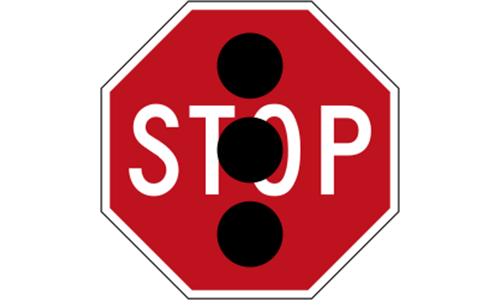
This sign is used when traffic signals are inoperative. It directs drivers to treat the intersection as a stop intersection to maintain safety.

This sign means you must slow down and be prepared to stop to give way to other vehicles or pedestrians. You must yield to traffic on the intersecting road before proceeding.

This sign specifically instructs you to give way to all vehicles already circulating within the roundabout. You must yield to traffic coming from your right (in right-hand drive countries) or from within the roundabout.
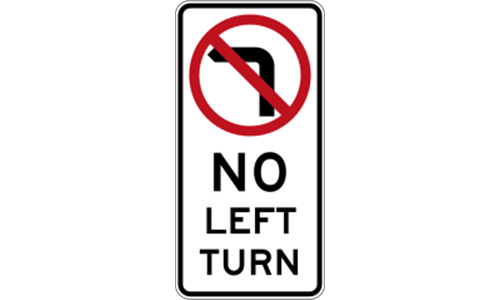
This regulatory sign prohibits drivers from making a left turn at the intersection or location where the sign is posted. Disobeying this sign is a traffic offense.

This sign is a mandatory instruction for drivers in the leftmost lane. They are required to make a left turn and cannot proceed straight or turn right from that lane.
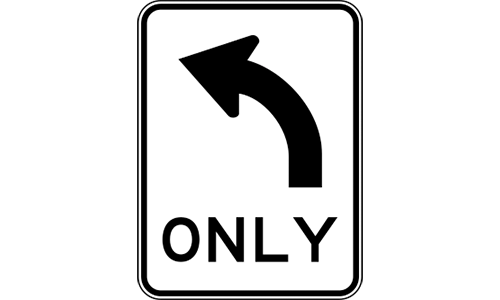
This sign indicates that the lane or road ahead is exclusively for vehicles turning left. No other movements (like going straight or turning right) are permitted from this point.

This regulatory sign prohibits drivers from making a right turn at the intersection or location where it is displayed. Disobeying this sign is a traffic offense.

This sign is a mandatory instruction for drivers in the rightmost lane. They are required to make a right turn and cannot proceed straight or turn left from that lane.
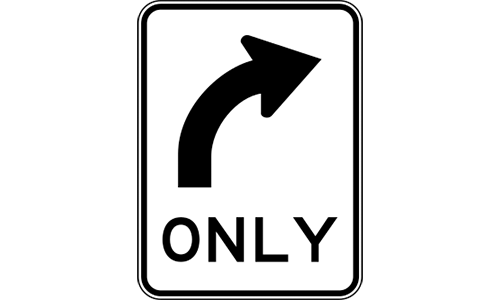
This sign indicates that the lane or road ahead is exclusively for vehicles turning right. No other movements (like going straight or turning left) are permitted from this point.
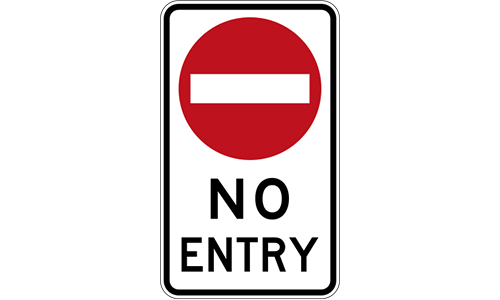
This regulatory sign indicates that vehicles are prohibited from entering the road or area beyond the sign. It is usually found at the exit of one-way streets or restricted zones.

This regulatory sign prohibits drivers from making a U-turn at the location where it is displayed. U-turns are forbidden here for safety or traffic flow reasons.
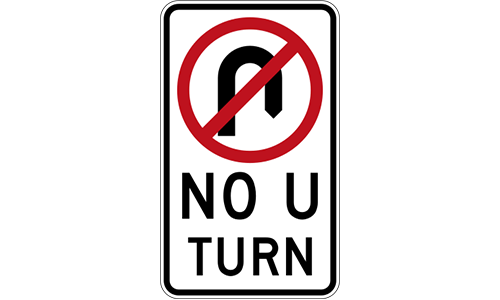
Similar to the circular sign, this regulatory sign prohibits drivers from making a U-turn. The text reinforces the visual prohibition, making it clear that U-turns are not allowed.
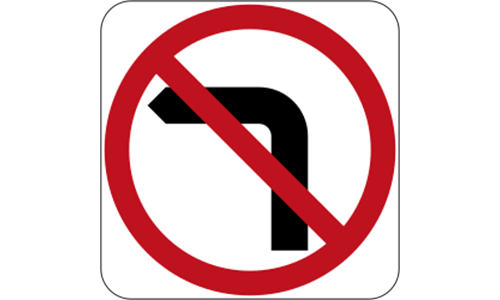
This regulatory sign prohibits drivers from making a left turn at the intersection or location where it is posted. Disobeying this sign is a traffic offense.

This regulatory sign prohibits bicycles from entering or using the roadway or area beyond the sign. It is usually placed where cycling is restricted for safety or other reasons.
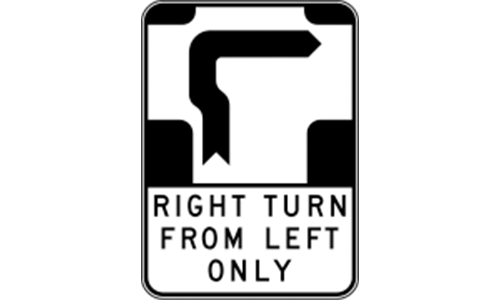
This sign specifies that drivers (often cyclists or specific vehicles) must perform a hook turn for a right turn, meaning they position themselves in the left lane or far left of the intersection and wait for cross-traffic to clear before completing the right turn.

This sign explicitly allows drivers to make a U-turn at the specific location where it is displayed. Without this sign, U-turns are typically prohibited at intersections with traffic lights.
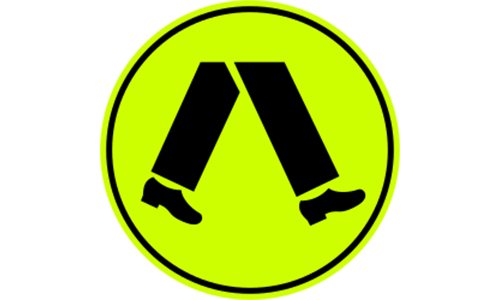
This warning sign alerts drivers to an upcoming pedestrian crossing or an area where pedestrians are likely to be present. Drivers should be prepared to slow down and yield to pedestrians.
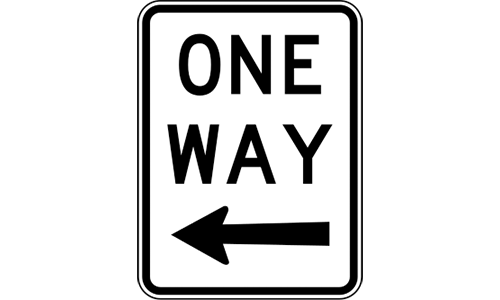
This sign designates a one-way street. You must proceed only in the direction indicated by the arrow, and no opposing traffic is permitted.
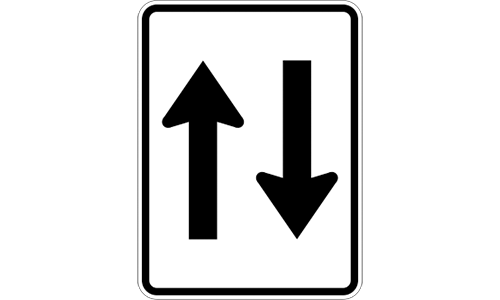
This sign indicates that the road has traffic flowing in both directions. You should be prepared for oncoming vehicles in adjacent lanes.
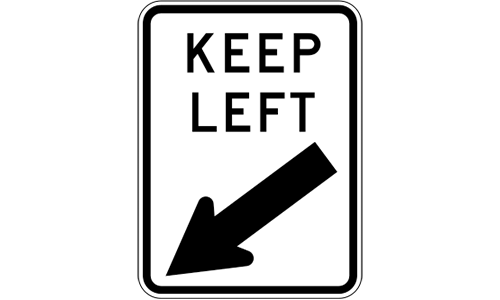
This regulatory sign instructs drivers to stay on the left side of a roadway, median, or obstruction. It ensures orderly traffic flow and safety, especially in multi-lane roads or around islands.

This is a regulatory sign indicating a section of road where it is unsafe or prohibited to pass other vehicles. Drivers must maintain their position behind other vehicles.
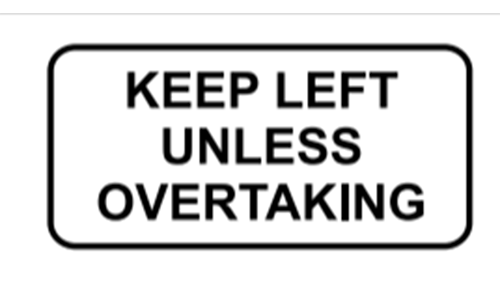
This regulatory sign mandates that drivers keep to the leftmost lane available for travel. The right lanes are typically reserved for passing or specific maneuvers, promoting smoother traffic flow.
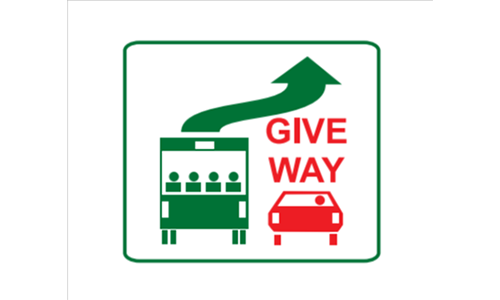
This sign highlights a specific rule to prioritize buses re-entering traffic from a stop. It enhances public transport efficiency and safety by requiring other drivers to yield.

These signs collectively indicate the beginning of a motorway. Motorways have specific rules, such as higher speed limits, no pedestrians, and no stopping, which drivers must adhere to.
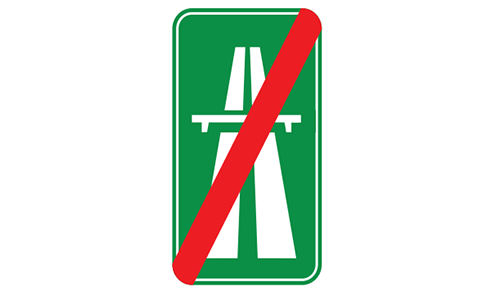
This graphic sign visually represents the end of motorway regulations. Drivers should adjust their speed and awareness for conditions on a regular road.
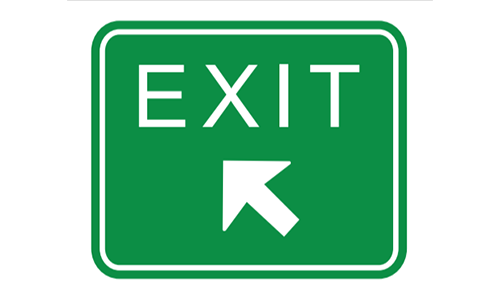
This sign indicates an upcoming exit from the motorway. It guides drivers to the correct lane for their intended exit.

This sign provides advance warning of an exit to specific locations. It allows drivers to move into the correct lane and prepare to leave the motorway.

This sign directs drivers towards a specific motorway route (M5) that is a toll road. It also indicates major destinations accessible via this motorway, such as the Airport and Sydney, informing drivers about the route and payment method.

This sign indicates a dedicated lane for vehicles preparing to turn in either direction from a median. It is not for through traffic.

This sign marks a lane specifically for cyclists. Unless otherwise permitted (e.g., to turn), motor vehicles should not use this lane.

This is a regulatory sign reserving the lane exclusively for buses. Other vehicles are prohibited to ensure efficient public transport.

This regulatory sign mandates that heavy vehicles (trucks) are required to keep to the left lane. This is often done to separate larger vehicles from general traffic flow.

This sign indicates a transit lane with a minimum occupancy requirement (T3 means 3 or more people). These lanes aim to encourage carpooling and improve traffic flow during peak hours.
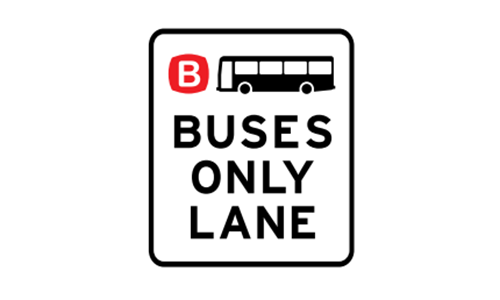
This sign indicates a dedicated space where only trams are allowed. Other vehicles must not enter or use this area to ensure the unimpeded movement of public transport.

This sign identifies a lane where trams operate. While some other vehicles might be allowed in certain situations (e.g., to turn), drivers should remain vigilant for trams and avoid obstructing them.

This sign indicates a lane intended for use by trucks. It helps organize traffic flow and can be used to direct heavy vehicles to specific parts of the roadway.

This is a mandatory regulatory sign for heavy vehicles. It directs trucks to remain in the leftmost lane, often on multi-lane roads, to improve overall traffic flow and safety.
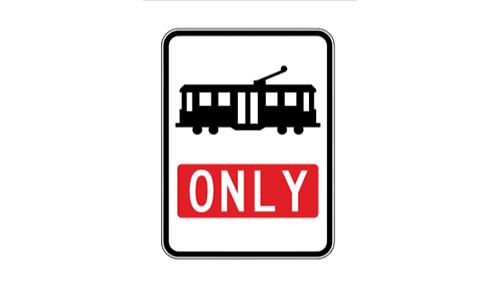
This sign designates a transit lane with a minimum occupancy requirement (T3 for 3 or more people). These lanes aim to promote carpooling and efficient public transport use during peak hours.
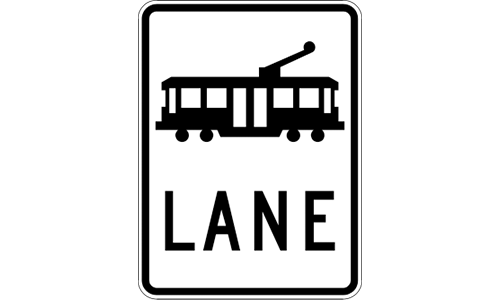
This sign designates an area, often off the roadway, where both pedestrians and cyclists are permitted and expected to coexist safely.
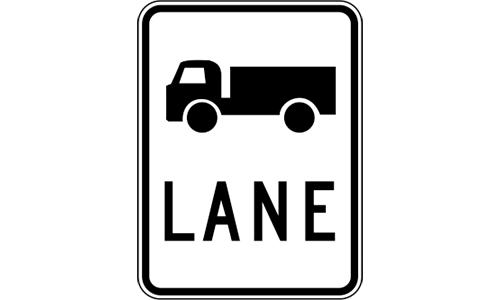
This regulatory sign instructs drivers to stay on the right. Its used to direct traffic flow, especially around islands or other road features.
 Flash Sales ends
Flash Sales ends  Get Subscription is just only
Get Subscription is just only 
